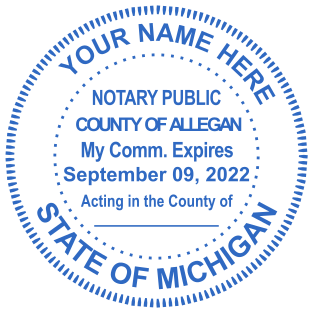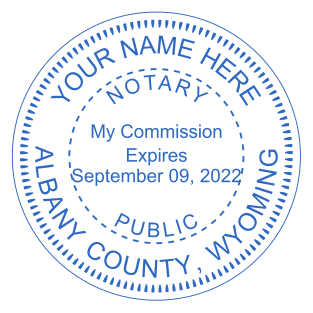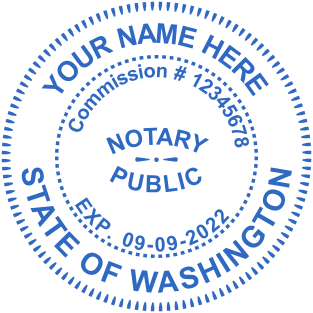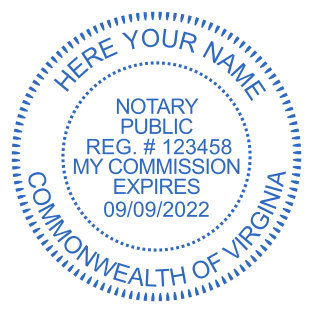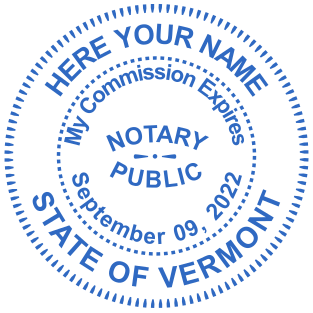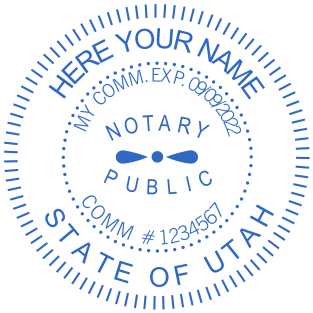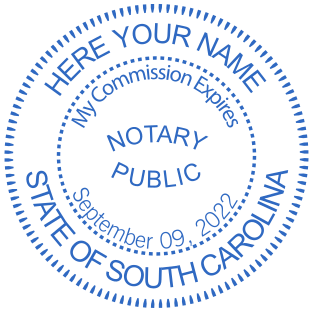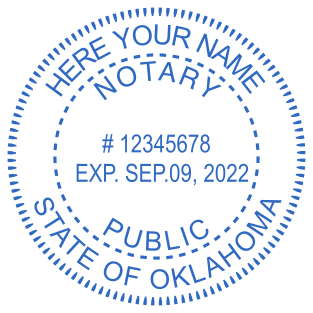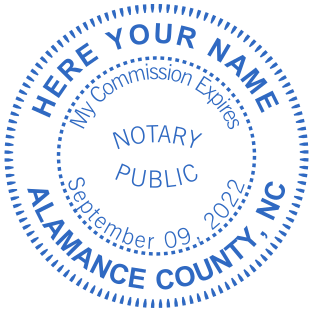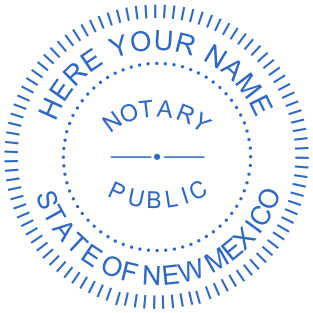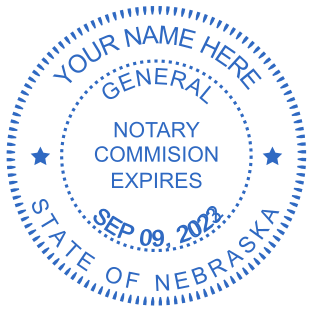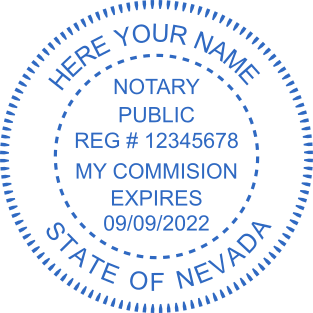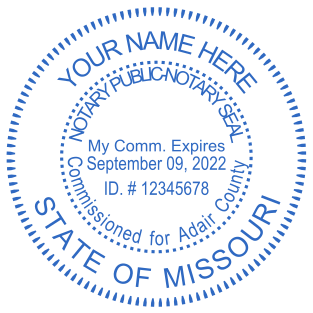What Is a Notary Seal? | Comprehensive Guide by MyStampReady
TABLE OF CONTENTS
I. Introduction
II. History of Notary Seals
III. Purpose and Uses of Notary Seals
IV. Types of Notary Seals
V. Components of Notary Seals
VI. Notary Seal Requirements
VII. Notary Seal Maintenance
VIII. Proper Usage of Notary Seals
IX. Conclusion
X. FAQ.
XI. Notary Stamps and Seal Templates
Notary seals have been a key component of legal documents for centuries. Their purpose is to provide authentication and verification of the signer's identity and the document's legitimacy. In this article, we'll explore the history, purpose, types, and requirements of notary seals.
I. Introduction
- Definition of a Notary Seal
- Importance of Notary Seals
Definition of a Notary Stamp:
Notary seals are important because they provide an added layer of security and verification for legal documents. By affixing a seal to a document, a notary is indicating that they have verified the identity of the signer and witnessed their signature. This helps prevent fraud and tampering and provides assurance to those relying on the document that it is authentic.
Importance of Notary Stamps:
Notary seals are required by law in many jurisdictions and are often a prerequisite for performing notarial acts. The design and use of notary seals can vary depending on the jurisdiction and the type of seal being used. In this article, we will explore the different types of notary seals, their legal requirements, their uses, and how they provide authentication. We will also discuss the components of notary seals, design and customization options, maintenance tips, and the future of notary seals in a digital age.
II. History of Notary Seals and Stamps
- Origins of Notary Seals
- Development of Notary Seals
- Changes in Notary Seals over time
Origins of Notary Stamps:
Notaries have been present in society since ancient Rome, where they served as public officials responsible for legal affairs. The first notaries used wax seals to authenticate their documents, and these seals often included images of the notary's patron saint or symbol of their trade.
Development of Notary Stamps:
Over time, notary seals evolved to include more detailed information, such as the notary's name, signature, and official stamp. The development of printing technology in the 15th century led to the production of more standardized notary seals, which became increasingly common in legal transactions.
Changes in Notary Stamps over time:
With the rise of digital technology, notary seals have undergone significant changes. Electronic notarization has become more prevalent, and many states now allow notaries to use electronic seals that are stored and affixed to documents electronically. These digital seals are often more secure and tamper-proof than traditional wax seals.
Overall, notary seals have a long and fascinating history that has seen them evolve from simple wax seals to sophisticated digital seals. Despite these changes, the purpose of notary seals has remained the same: to authenticate legal documents and ensure their enforceability.
III. Purpose and Uses of Notary Seals
- Uses of Notary Seals
- How Notary Seals provide authentication
Uses of Notary Stamps:
Notary seals are used to certify the validity of legal documents, including contracts, deeds, wills, and powers of attorney. They also play a vital role in verifying the identity of the signer and ensuring that they signed the document of their own free will. Notary seals are often required for documents that need to be recorded or filed with a government agency, such as property transfers or marriage licenses.
How Notary Stamps provide authentication:
Notary seals provide authentication by creating a permanent record of the notary's actions. When a notary affixes their seal to a document, they are certifying that they witnessed the signing of the document and that the signer was properly identified. Notary seals also provide a way to verify the authenticity of the notarized document, as they can be used to track the document's chain of custody and ensure that it has not been altered.
Overall, notary seals serve an important purpose in legal transactions by providing authentication, verifying identity, and certifying the validity of legal documents. They are required by law in many cases, and failure to comply with legal requirements can result in legal repercussions.
IV. Types of Notary Seals
- Embossed Notary Seals
- Inked Notary Seals
- Electronic Notary Seals
- Embossed Notary Stamps: An embossed notary seal is created by pressing a metal die onto the paper, creating a raised impression of the seal. Embossed seals are typically used for notarizations where the document is being sent to another country or where the jurisdiction requires an embossed seal. Embossed seals are difficult to forge and provide a clear and distinct impression on the paper.
- Inked Notary Stamps: An inked notary seal is created by stamping the notary seal onto the paper using an ink pad. Inked seals are typically less expensive and easier to produce than embossed seals. They are commonly used for notarizations where the document will be filed or kept in the United States.
- Digital Notary Stamps: An electronic notary seal is a digital image of the notary seal that is embedded into an electronic document using special software. Electronic notary seals are becoming more popular due to the increased use of electronic documents and the ability to notarize documents remotely. Electronic seals typically include security features to prevent tampering or forgery.
V. Components of Notary Seals
- Elements of a Notary Seal
- Design and customization options
Elements of a Notary Stamp:
- The Notary's Name: The notary's name is typically included in the center of the seal. This serves to identify the notary who performed the notarization.
- The Notary's Commission Number: The notary's commission number is typically included on the seal. This number identifies the notary and verifies that they are authorized to perform notarial acts.
- The Notary's Expiration Date: The notary's expiration date is typically included on the seal. This indicates when the notary's commission expires and the seal will no longer be valid.
- The Notary's Jurisdiction: The notary's jurisdiction may be included on the seal. This indicates the state or other governing body that has granted the notary's commission.
Design and customization:
- Seal Shape: Notary seals can come in various shapes, such as circular, oval, or rectangular.
- Border: Notary seals may have a border around the edge of the seal.
- Background: Notary seals may have a plain background or may include decorative elements, such as a state seal or other symbols.
- Font: The font used for the notary's name and commission number may be customizable.
- Seal Material: Notary seals can be made of different materials, such as metal or plastic.
VI. Notary Seal Requirements
- State-specific requirements
- Guidelines for creating a Notary Seal
- What information to include on a Notary Seal
State-Specific Requirements:
Guidelines for Creating a Notary Seal:
- Use a high-quality seal or stamp that is designed for notary use.
- Choose a size that is appropriate for the documents being notarized and complies with state requirements.
- Choose a color that is legible and contrasts with the background of the document.
- Include all required information on the seal, such as the notary's name, commission expiration date, and state of commission.
- Ensure that the seal is durable and will not smudge or blur over time.
It is important for notaries to review their state's requirements for notary seals and ensure that their seals comply with all applicable laws and regulations.
VII. Notary Seal Maintenance
- How to care for a Notary Seal
- When to replace a Notary Seal
- Legal implications of damaged or expired Notary Seals
- Store the seal in a secure location: When not in use, the notary seal should be stored in a secure location, such as a locked cabinet or drawer, to prevent it from being lost or stolen.
- Keep the seal clean: The notary seal should be kept clean to ensure that it produces a clear impression on documents. The seal can be wiped with a clean, dry cloth to remove any dirt or debris.
- Protect the seal from damage: The notary seal should be protected from damage, such as scratches or dents, which could impact the clarity of the impression it produces.
- Check the expiration date: Notaries should check the expiration date of their seal regularly to ensure that it is still valid. If the seal has expired, it should be replaced immediately.
- Replace the seal as needed: Notary seals may need to be replaced periodically due to wear and tear or changes in the notary's information, such as a name change or commission renewal.
VIII. Proper Usage of Notary Seals
Using a notary seal correctly is essential to ensure the integrity and legality of notarized documents. In this section, we'll cover the dos and don'ts of using a notary seal, common mistakes to avoid, and how to properly store and maintain a notary seal.
Dos and Don'ts When Using a Notary Seal
Dos:- Always use your notary seal on the same page as your notary signature.
- Make sure the impression of your notary seal is clear and legible.
- Ensure that the notary seal you are using is current and valid.
- Keep your notary seal secure and prevent others from using it without your permission.
- Don't use your notary seal on a blank piece of paper or an incomplete document.
- Don't use an expired or invalid notary seal.
- Don't allow others to use your notary seal without your permission.
- Don't use your notary seal to notarize documents outside of your authorized jurisdiction.
Common Mistakes to Avoid
Some common mistakes to avoid when using a notary seal include:- Using an incorrect or outdated notary seal.
- Placing the notary seal on the wrong page or location on the document.
- Failing to make a clear and legible impression with the notary seal.
- Using a damaged or worn-out notary seal.
IX. Conclusion
- Recap of key points
- Future of Notary Seals in a digital age
There are different types of notary seals, including embossed, inked, and electronic seals, and the design and customization options can vary depending on the jurisdiction and type of seal being used.
Proper maintenance of notary seals is important to ensure their validity and effectiveness. Notaries should store the seal in a secure location, keep it clean, protect it from damage, and replace it as needed.
Future of Notary Stamps in a digital age:
As we move into a more digital age, there is a growing trend toward electronic notary seals and remote online notarization. While there are still legal and logistical challenges to overcome, the use of digital notary seals is likely to increase in the future.
Overall, notary seals will continue to play an important role in the legal system and provide a valuable service for verifying and authenticating legal documents.
X. FAQ: Notary Stamp or Seal - Common Questions and Answers
1. How often should I renew my notary seal?
2. Are there any legal requirements for the size or shape of a notary seal?
3. Can I use a notary seal from one state in another state?
4. What is the difference between a notary seal and an embosser?
5. What is the difference between a notary seal and a notary certificate?
6. Can I create my own notary seal?
7. What should I do if my notary seal is damaged?
8. How long does it take to receive a notary seal after ordering?
9. Can a notary public notarize a document without the signer present?
10. Can a notary public notarize a document for a family member?
11. What should I do if there is an error on my notary seal?
12. What is the difference between a notary seal and a notary journal?
13. Can I use a notary seal for international documents?
14. What is the process for becoming a notary public?
15. What is the difference between a notary public and a notary signing agent?
16. Can a notary public notarize a document for a business they own?
17. What is the purpose of a notary seal impression?
18. Can a notary public notarize a document for a friend?
20. What should I do if my notary seal is stolen?
21. What is the difference between a notary seal and a notary acknowledgment?
22. Can a notary public notarize a document that requires witnesses?
23. What should I do if my notary seal is lost?
24. Can a notary public notarize a document for a spouse?
25. What is the difference between a notary seal and a notary signature?
26. Can a notary public notarize a document if they have a financial interest in it?
27. What are the qualifications to become a notary public?
28. Can a notary public notarize a document that is written in a foreign language?
29. What is the difference between a notary seal and a notary commission?
30. What should I do if my notary seal is stolen or lost while traveling?
XI. Create Your Own Notary Seals and Stamps with following Template Examples
Date of publication 2023-04-02 03:44:58




